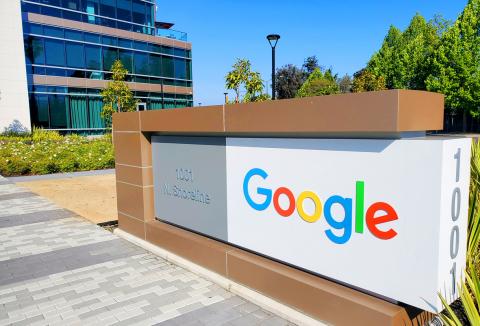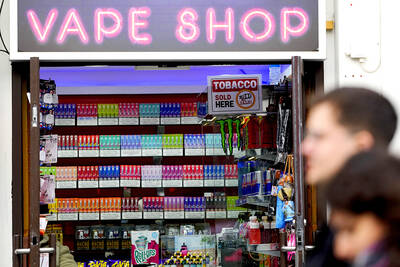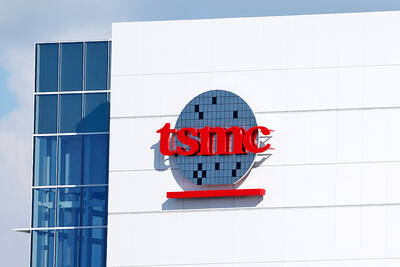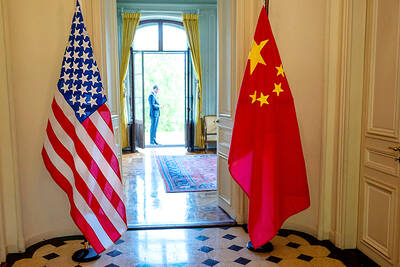Home to a Peach Street, an Orange Street and a Lemon Street, the Fruit Belt district of Buffalo, New York, has been known by that name since German settlers planted orchards there in the 1800s.
So, resident Veronica Hemphill-Nichols was surprised when she opened Google Maps on her first, freshly bought smartphone about 10 years ago and saw the area rebranded as Medical Park.
“I flipped my wig when I found out they changed our name,” she told reporters by telephone.

Photo: Reuters
Since Google Maps launched in 2005 and grew its user base, puzzled and angry residents in cities around the world have increasingly reported finding neighborhoods with incorrect or unfamiliar names, geography and data, researchers said.
Names chosen by Google, with more than 1 billion people using its mapping service every month, often end up sticking, as they influence how real-estate agencies, travel Web sites and home-sharing apps refer to an area.
“In many ways, Google is defining the world,” said Matthew Zook, a professor of geography at the University of Kentucky, adding that the tech giant has set itself out as the world’s leading map-maker.
“You’ll see Airbnb and others ... referring to these neighborhoods on the map in ways that are reflecting Google’s view of the world rather than maybe the local view of the world,” Zook said.
However, labeling mistakes highlight the tensions between the company’s drive to get clear, comprehensive global data and the complex identities of local areas, leaving some communities feeling misrepresented, he said.
A spokeswoman for Google said that the company gets its data on neighborhoods from a combination of third-party providers and public sources, and stressed that it encourages everyone to report any errors.
“Overall, this provides a comprehensive and up-to-date map, but when there are inaccuracies, we work to address [them] as quickly as possible,” she said in e-mailed comments.
GENTRIFICATION?
To Fruit Belt residents, the new name looked like a nod to the Buffalo Niagara Medical Campus, a large medical center that was being built on the edge of the working-class, predominantly African-American neighborhood, local activists said.
At the time, locals said they were starting to be priced out of their homes by wealthier medical workers coming to live in the area, and many interpreted the name change as a signal that the community was losing a battle against gentrification.
“When they took away our name, they took away our identity,” said Hemphill-Nichols, a housing campaigner, adding that she thought that would lead to the medical park eating up more of the neighborhood.
Sarah Warner, a spokeswoman for the medical center, said it never requested any name change on Google Maps.
The Buffalo Council also offered residents few answers, Hemphill-Nichols said, adding that at a town hall meeting called after the change emerged, an official pointed to a long-forgotten, four-decade-old planning assessment as a possible source for the name.
The council was not available to comment.
The Fruit Belt eventually returned to its original designation this year, after a local daily contacted Google for an article about the issue.
“You have no idea what a load was lifted off me,” Hemphill-Nichols said.
Zook said that Google, hungry for data, often gets its place names from whatever maps it can find, even if they are not strictly official, and ends up giving that information more authority than its authors originally intended.
For the Italian city of Milan, Google appears to have largely drawn from a map created by local blog Urbanfile, said its author Roberto Arsuffi, who explained that he had made up some of the place names.
Arsuffi said that he sometimes used little-known landmarks to describe small, unnamed areas when coming up with location labels for his map.
For example, he named the district of Acquabella after an old farmhouse and a nearby railway junction, both of which have since been demolished.
However, on official maps, Acquabella does not exist as a distinct area with its own name. Its territory is split between two larger districts.
Google Maps picked up Arsuffi’s names a few weeks after the Urbanfile map was published about five years ago, Arsuffi said.
Suddenly, some Milanese found themselves living in unknown neighborhoods.
“I’ve been here 10 years and I’ve never heard of it,” said a local bar owner after being told that, according to Google, his property was within the boundaries of Acquabella.
Arsuffi said he had contacted Google to flag inaccuracies he spotted online, but received no reply.
USER ADDED?
Google said it had not directly taken names from Urbanfile’s map, but that users had made those edits to its map through Map Maker, a now-defunct tool that allowed the public to make contributions to Google Maps.
With Map Maker out of service since 2017, map enthusiasts in Leeds, England, have been testing other methods of preserving beloved place names perceived as being at risk of disappearing.
Last year, upon hearing that a developer was planning to build new apartments in the area known as Quarry Hill — once home to the largest social housing complex in Britain — and rename it SOYO, local writer Chris Nickson sent a complaint to the council.
“In a stroke, this erases centuries of Leeds history,” he wrote in the letter, which he also posted on Twitter.
The appeal against the moniker SOYO, which stands for “South of York Road,” was taken up by Thomas Forth, head of data at the Open Data Institute Leeds, a think tank.
He marked the area in central Leeds as Quarry Hill on OpenStreetMap, a Wikipedia-style mapping service, hoping it would be picked up by Google and other online map providers.
“Changing a name could be seen as an extreme example of gentrification,” Forth said in a phone interview. “Especially if former or current residents feel that the names they use are not welcome anymore.”
A spokeswoman for SOYO said in an e-mail that the development would cover only part of Quarry Hill and will regenerate the site, bringing new residential housing, as well as bars, restaurants and a hotel.
The company would work to update signage, reference points and online information with the new name as construction progressed, she said, adding that the area had been a car park for more than 40 years after the council blocks were demolished.
“Our project marks the beginning of a new chapter for this part of the city,” she said.
For now, that chapter has no name — at least on Google Maps.

Real estate agent and property developer JSL Construction & Development Co (愛山林) led the average compensation rankings among companies listed on the Taiwan Stock Exchange (TWSE) last year, while contract chipmaker Taiwan Semiconductor Manufacturing Co (TSMC, 台積電) finished 14th. JSL Construction paid its employees total average compensation of NT$4.78 million (US$159,701), down 13.5 percent from a year earlier, but still ahead of the most profitable listed tech giants, including TSMC, TWSE data showed. Last year, the average compensation (which includes salary, overtime, bonuses and allowances) paid by TSMC rose 21.6 percent to reach about NT$3.33 million, lifting its ranking by 10 notches

Popular vape brands such as Geek Bar might get more expensive in the US — if you can find them at all. Shipments of vapes from China to the US ground to a near halt last month from a year ago, official data showed, hit by US President Donald Trump’s tariffs and a crackdown on unauthorized e-cigarettes in the world’s biggest market for smoking alternatives. That includes Geek Bar, a brand of flavored vapes that is not authorized to sell in the US, but which had been widely available due to porous import controls. One retailer, who asked not to be named, because

SEASONAL WEAKNESS: The combined revenue of the top 10 foundries fell 5.4%, but rush orders and China’s subsidies partially offset slowing demand Taiwan Semiconductor Manufacturing Co (TSMC, 台積電) further solidified its dominance in the global wafer foundry business in the first quarter of this year, remaining far ahead of its closest rival, Samsung Electronics Co, TrendForce Corp (集邦科技) said yesterday. TSMC posted US$25.52 billion in sales in the January-to-March period, down 5 percent from the previous quarter, but its market share rose from 67.1 percent the previous quarter to 67.6 percent, TrendForce said in a report. While smartphone-related wafer shipments declined in the first quarter due to seasonal factors, solid demand for artificial intelligence (AI) and high-performance computing (HPC) devices and urgent TV-related orders

MINERAL DIPLOMACY: The Chinese commerce ministry said it approved applications for the export of rare earths in a move that could help ease US-China trade tensions Chinese Vice Premier He Lifeng (何立峰) is today to meet a US delegation for talks in the UK, Beijing announced on Saturday amid a fragile truce in the trade dispute between the two powers. He is to visit the UK from yesterday to Friday at the invitation of the British government, the Chinese Ministry of Foreign Affairs said in a statement. He and US representatives are to cochair the first meeting of the US-China economic and trade consultation mechanism, it said. US President Donald Trump on Friday announced that a new round of trade talks with China would start in London beginning today,